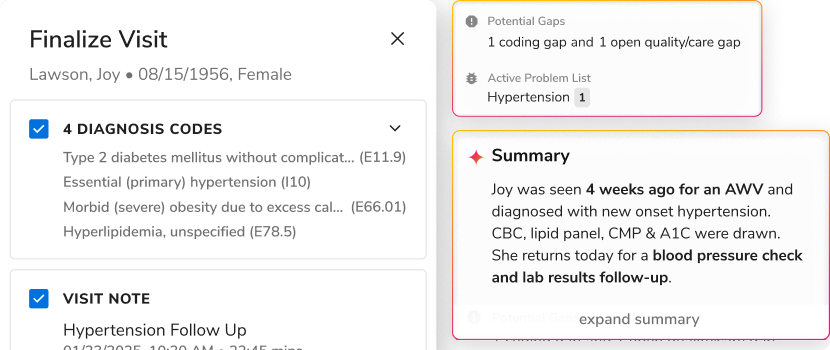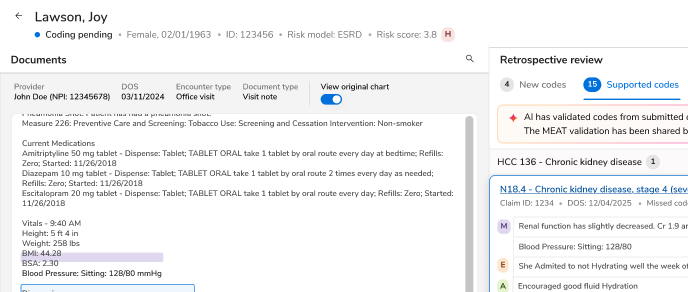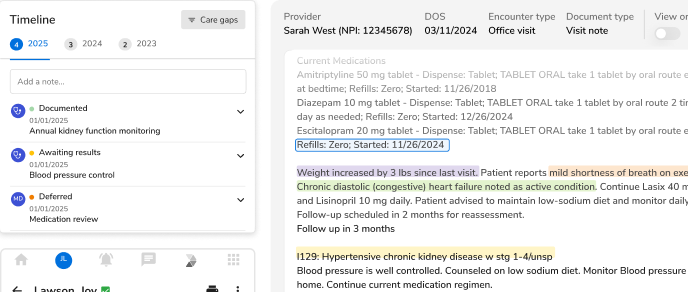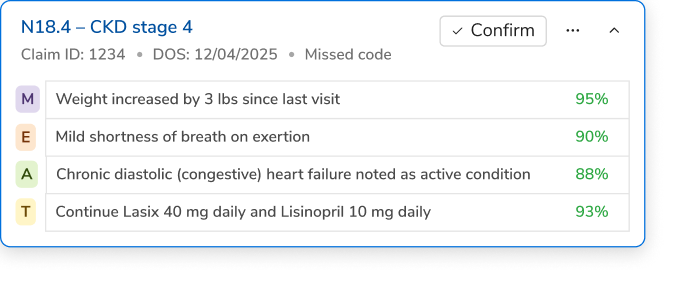The Coming Healthcare Singularity

Pull out your healthcare IT crystal ball. What do you see?
There’s a time, not far off, when the patient will literally be at the center of our healthcare information technology systems—wired in, always on, wearing or implanted with digital health technology that’s evolved to the point where every woman, man, and child can be connected and cared for digitally, remotely, and holistically.
This “healthcare singularity” is already under way. Gartner projects global spending on wearable devices will hit $81.5 billion this year, up from $69 billion in 2020. Half of those devices are therapeutic, with diabetes and cardiovascular disease fueling demand, according to analysts at Future Market Insights.
Medical devices of all shapes, sizes, and uses are going online. Diabetes monitors and insulin pumps communicate with smartphones and upload their data to the cloud. Digital monitors track sleep patterns and vital signs in the cloud. Biometric scanners are driving remote care in the cloud. And that’s just for starters.
While healthcare IT leaders are fighting data fragmentation between their EHRs, vendors’, and legacy systems in the data center today, an entirely new universe of siloed digital health data is spawning in the cloud, before our eyes.
It’s crucial that healthcare move beyond “point” transformations driven by specific clinical, financial, operational, or regulatory requirements organizations want to meet, to a holistic transformation—one that addresses today’s transformation needs, yet anticipates advances in information technology that will coalesce around patient data generated beyond traditional healthcare settings.
The Data Model Will Be All About the Patient
Make no mistake about it: Payer-provider collaboration to deliver whole-person, value-based healthcare requires a unified view of the patient—one that encompasses all of their clinical, medication, social, financial, connected devices (including both consumer and therapeutic wearables), and data from sources we can’t yet imagine.
Data models around process automation, billing, claims, utilization management, and so on are important, and of course we need to do those things. But those data models don’t do anything to enable the unified healthcare information exchange that healthcare’s coming singularity is all about.
They’re too narrowly focused on solving specific problems in specific ways. And because there’s zero information exchange between them, they can’t enable stakeholders—payers and providers to start, but healthcare’s entire digital ecosystem eventually—to work together to facilitate whole-person care.
A patient-centric data model must be the beating heart of healthcare IT to drive and sustain transformation over the long haul; indeed, in perpetuity.
We must take direct aim at healthcare’s Achilles heel, which is the fractured nature of patient data. Once we have a unified record that makes patient information complete, open, and accessible, the “single source of clinical and financial truth” that every provider and payer have longed for is suddenly within reach.
This is healthcare’s next great technological shift, perfectly aligned and perfectly timed to the coming singularity. And it will rock healthcare’s foundations with more seismic energy than the introduction of the EHR itself.
The Ecosystem Will Be Open
Such a seismic transformation demands the democratization of patient data. But no one vendor or IT team or government mandate can do it alone. It requires an open, cooperative digital ecosystem where every healthcare organization and their members and patients can connect, collect, curate, and activate healthcare data from virtually any source. That means every EHR, every HIE, and every payer, pharmacy, lab, and vendor—as well as every Internet-connected medical device and wearable, smartphone health app, and every future source of healthcare data.
Market forces are aligning towards openness. Government regulators are aligning towards openness. And the new wearable and medical devices that are catalyzing the singularity are intrinsically open and connected in the cloud. Your platform ecosystem of choice should align towards openness as well.
Accelerating transformation can’t happen if our systems and our data and our patients are boxed in. The singularity means we must put an end to walled gardens and the rising crop of “walled clouds.” Along each and every fault line that separates healthcare’s fractured data is a gap that prevents or otherwise impedes payers, providers, and frankly, everyone else in healthcare from working together on behalf of the patient.
The technical underpinnings, the speeds and feeds, the data model, the platform ecosystem—they’re all means to an end. And that end is collaboration. The future of health will be built on pervasive collaboration, considering the explosion of digital and real-time device data from sources beyond the health plan’s, the hospital’s, and the physician’s four walls.
Moreover, as consumers become responsible for more of the cost burden, they want—indeed, they will insist—on pervasive collaboration. Helping consumers shop for, schedule, and access care online, improving their basic patient experience, is important today, but it falls short of the moonshot healthcare needs. Consumers will be making choices based not only on how digitally savvy their consumer engagement is, but rather, on how well the entire healthcare system works together to deliver an integrated value proposition.
The Future is Unified
We must drive transformation that’s aligned to the true future of healthcare—the digital singularity around the patient which is now under way and blossoming—and that demands far more from us than a simple “lift and shift” from the old data center to a new hosted model. That’s so Y2K.
We must, instead, embrace a wholesale reimagining and restructuring of how healthcare stakeholders collaborate, and who those stakeholders are (hint: it’s all of us, to a one). Healthcare delivery will be driven by seamlessly intertwined systems with data flowing bidirectionally, acted upon asynchronously, in real time, from anywhere at any time on any device, with the fully instrumented patient at the center.
Unless digital transformation heals healthcare’s fractured data and workflows, we’re merely shifting our old problems to new infrastructures. Let us not ignore the now obvious signs that point irrevocably to the coming singularity of healthcare IT, health data, and the patient.
Let’s move beyond fixing this and that, here and there, to delivering a true strategic intervention that establishes a future-forward foundation for accelerating healthcare’s transformation today, and, instead of merely keeping pace or catching up or taking a lead, facilitates healthcare’s singularity tomorrow—where IT is all about the patient.
This article first appeared on my LinkedIn Blog

.png)





.png)









.svg)
.svg)

.svg)

